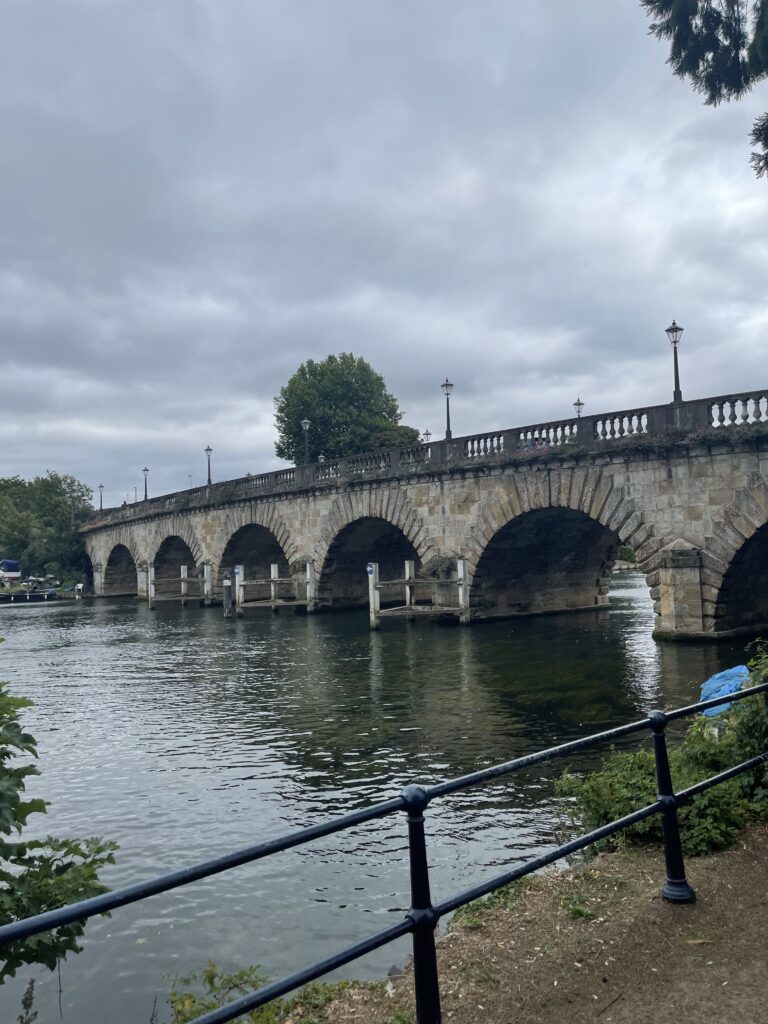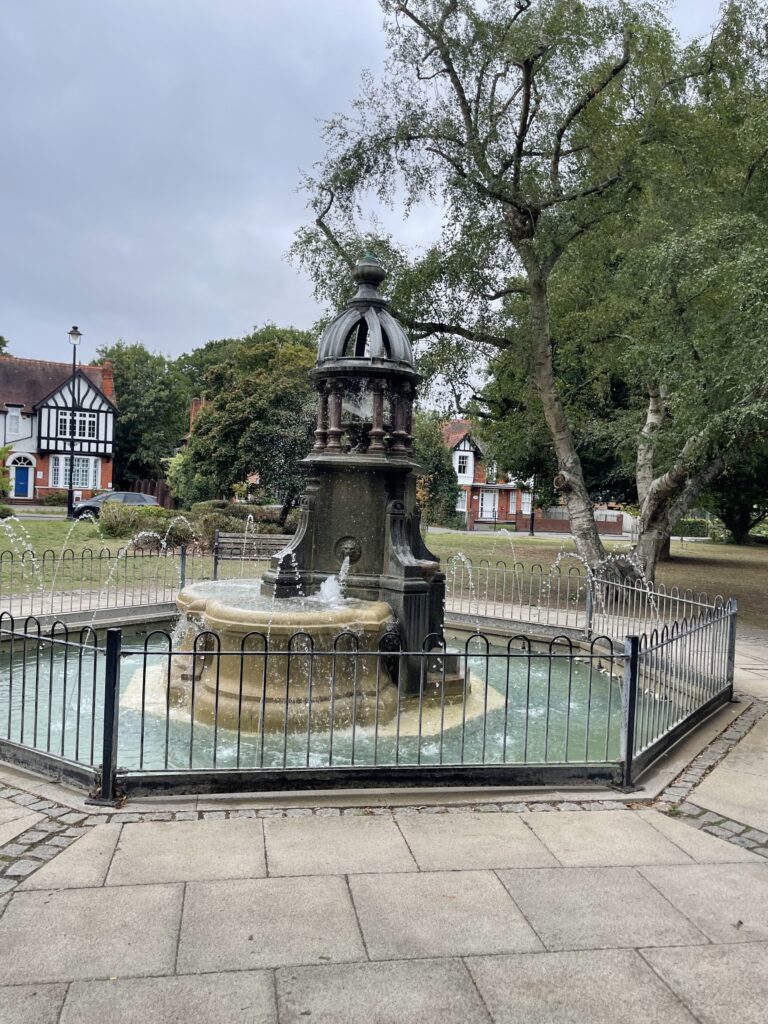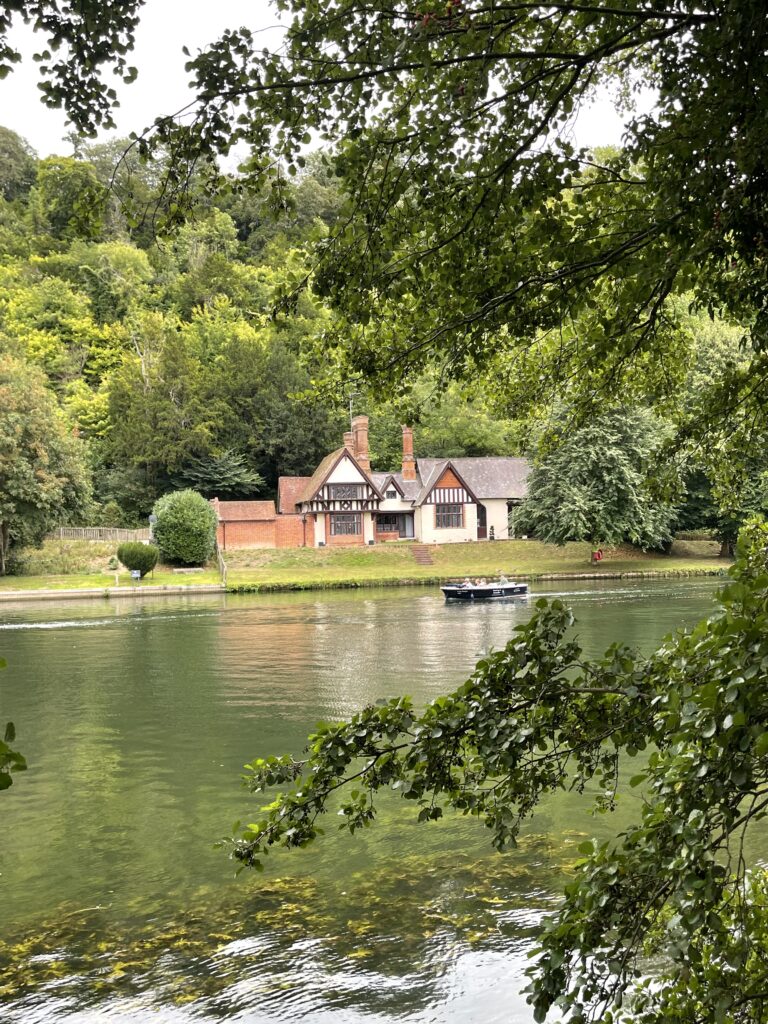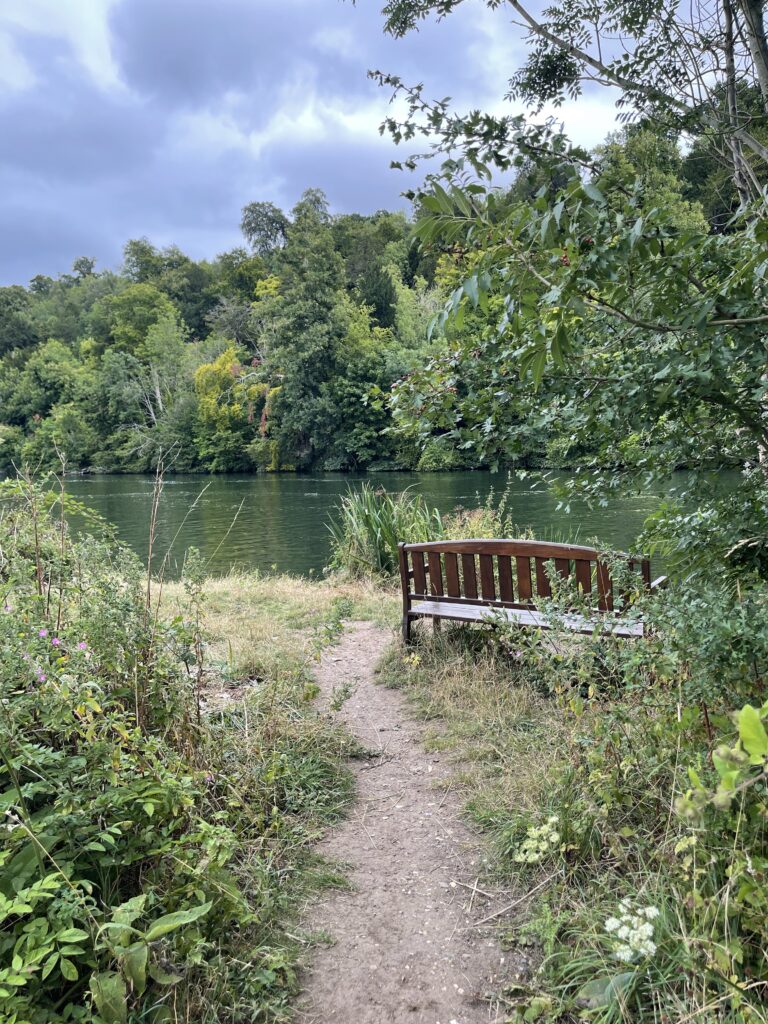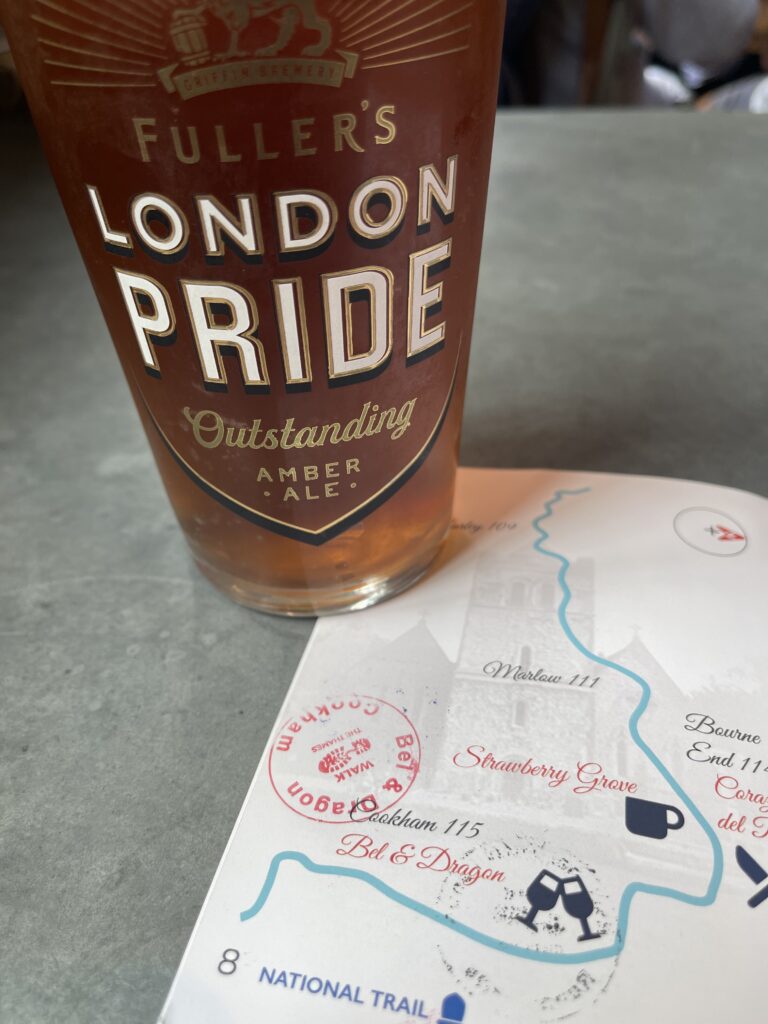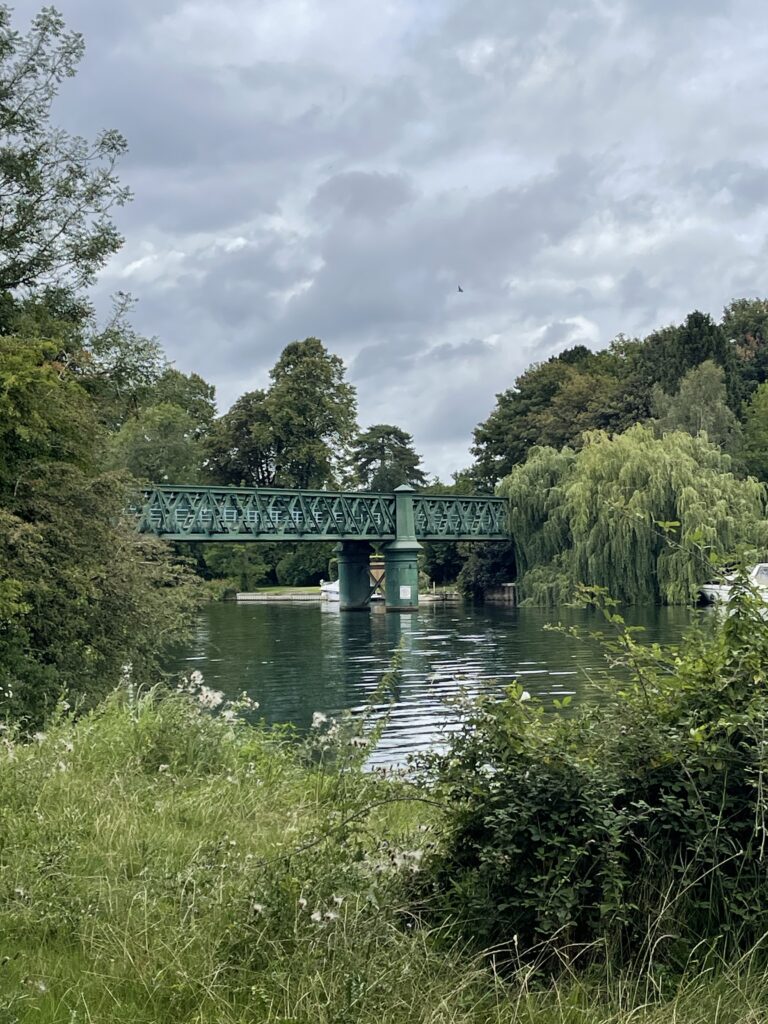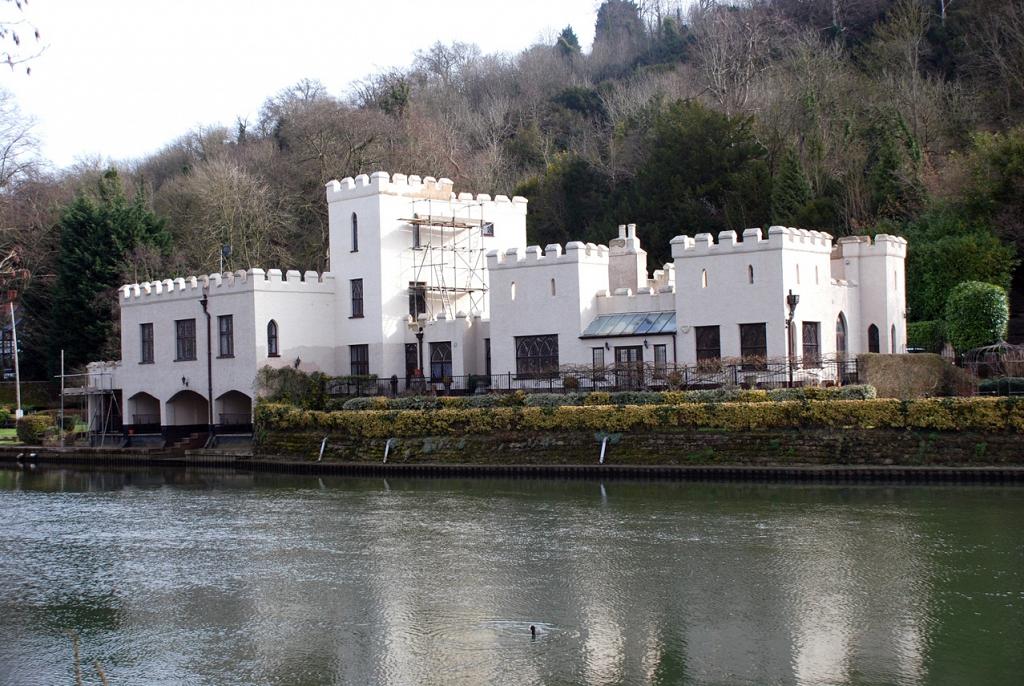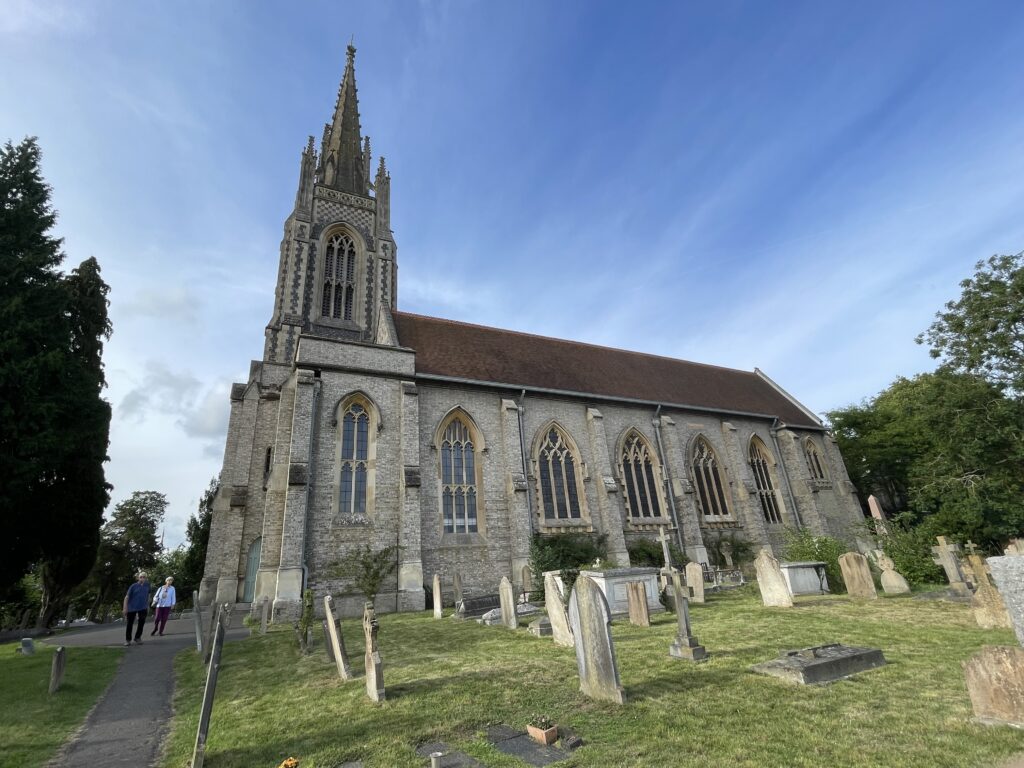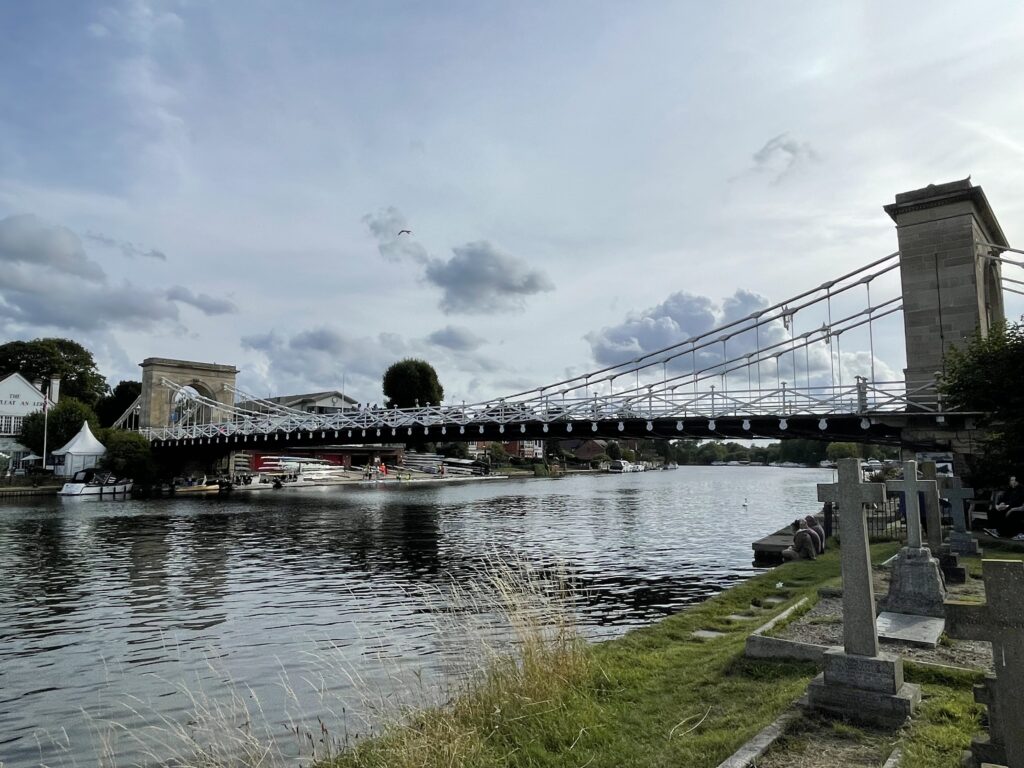Total Distance: 8.2 miles
Time: 4 hours 25 minutes
Points of Interest:
Maidenhead Bridge
Maidenhead Bridge Garden
Ada Lewis Memorial
Boulters Lock
Clivedon House
The Stanley Spencer Gallery
The Tarry Stone
Holy Trinity Church
Cock Marsh
Bourne End Railway Bridge
Bourne End Marina
Quarry Wood
Quarry Wood Hall
Marlow Lock
All Saints Church
Marlow Bridge
After a two-month hiatus, Cher and I are finally back on the Thames path! The recent heatwaves and my busy schedule made long walks impossible, but with a free day and perfect temperatures, it’s the ideal time for another adventure.
Today’s walk is from Maidenhead to Marlow, around 8 miles in total. We arrived at Taplow at around 12:30pm. I opted for Taplow station, as it’s a shorter distance to our starting point at Maidenhead Bridge compared to Maidenhead station, and we wanted to save our energy!
Opened in 1777, the current Maidenhead bridge, a Grade I listed structure, carries the A4 road over the River Thames. A bridge has existed at this site since 1280. The original wooden bridge saw the introduction of tolls in 1297. The present bridge is constructed from Portland stone and brick; however, to cut costs during its construction, only the arches spanning the river were built with Portland stone.
After crossing the bridge, we arrived at Bridge Gardens, a 0.5-hectare park situated along the banks of the Thames.
Within the park stands a memorial, erected in 1908, dedicated to local benefactor Ada Lewis. This memorial originally served as a drinking trough for horses during the era of heavy horse-coach traffic over Maidenhead Bridge. It was initially located outside the Thames Riviera Hotel before being moved in the 1970s to the opposite side of the A4, where it was repurposed as a large bedding planter.
In late 2010, the memorial was relocated to a more central position within Bridge Gardens. It has since been converted into a fountain and is illuminated at night.
After a brief rest stop, we continued along the path, which follows the A4094 road towards Boulter’s Lock. The lock, originally known as Boltus or Bolters Lock, was built in 1772 and rebuilt in 1912. It was initially located on the Taplow side, near Taplow Mill. The name “bolter” refers to a miller, in connection with the Taplow mill.
After passing the lock, the path transitions from the road to a more enjoyable woodland trail. Across the river lies Cliveden House and its surrounding woodlands, now managed by the National Trust. While the main house, a Grade I listed building constructed in 1851, isn’t visible from this side (the two prior houses having been destroyed by fire), a few holiday cottages on the estate can be seen.
Cliveden has a rich history, having been home to a Prince of Wales, two dukes, an earl, and finally the Viscounts Astor. It was a significant meeting place for political intellectuals known as the Cliveden Set in the 1920s and 30s, and later gained notoriety in the 1960s due to the Profumo affair.
It was time for lunch, and I found a perfect lunch spot: a bench overlooking the river and Cliveden woods. Thankfully, I remembered to pack a lunch this time! Cher enjoyed some well-deserved treats as we spent about half an hour soaking in the pleasant view.
After refuelling, we continued our journey to Cookham, a picturesque village with a rich history of notable residents. The renowned English painter Sir Stanley Spencer, a native of Cookham, often featured the villagers and their daily lives in his works. It is believed that Kenneth Grahame, who resided at The Mount in Cookham Dean during his childhood and later returned to the village to write, drew inspiration from the River Thames at Cookham for his classic, The Wind in the Willows. Additionally, Quarry Wood in Bisham, which adjoins Cookham, is thought to be the inspiration for the Wild Wood in Grahame’s novel.
In Cookham, I also managed to collect a stamp for my Walk the Thames passport. We made a stop at the Bel and Dragon pub for the stamp, and it seemed only right to enjoy a pint while we were there.
Passing by the village pub, I completely missed the Tarry Stone, which stands in the village centre. Tarry means “to wait” or “to linger,” but I did neither, walking right past it. I only noticed it later when I reviewed my route on Google Maps. Locals once speculated it was a meteorite, but it’s actually a sarsen stone native to the area. It’s believed to have marked the property boundary of a powerful figure, the Abbot of Cirencester, who had a nearby residence.
Like any significant stone, the Tarry Stone is said to possess special powers, which were only put to the test when someone decided to move it. A man named George Venables relocated it to Mill House Gardens, a nearby property. Immediately, the Venables family began to experience difficulties. The locals concluded that the family was cursed for disturbing the Tarry Stone. Understandably, the Venables swiftly returned the stone to its original spot.
As I didn’t get chance to take a photo of it, here’s an old picture postcard of the stone.
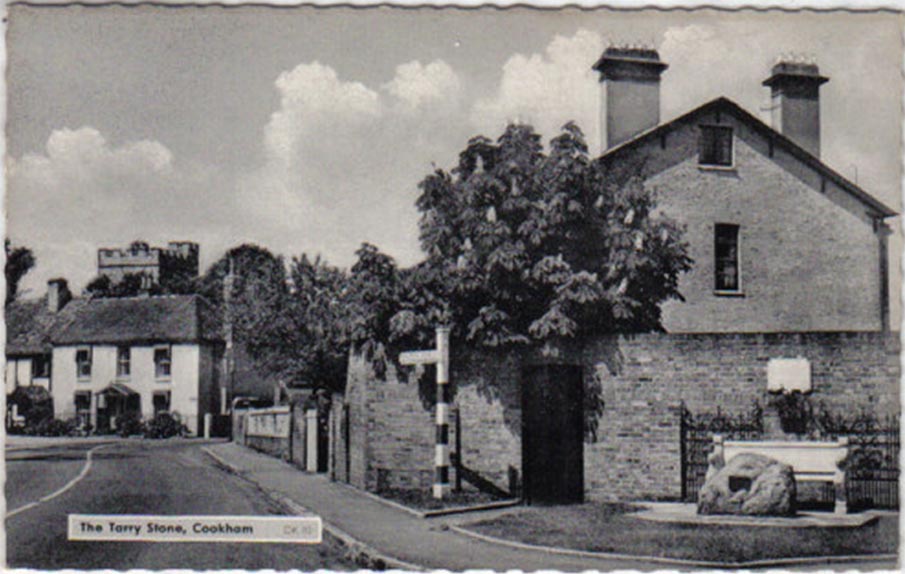
‘I like to take my thoughts for a walk and marry them to someplace in Cookham’
– Sir Stanley Spencer
Before rejoining the river, the path led through the grounds of Holy Trinity Church. This Grade II listed church is thought to be around 1000 years old and may have been part of a monastery established by the 8th-century Queen Cynethryth. The construction of the current church likely began around 1140, though it has been significantly expanded over the centuries.

Sir Stanley Spencer’s work frequently depicts biblical scenes, such as miracles and the Crucifixion, not in the Holy Land but in Cookham, his birthplace and lifelong home. The churchyard of Holy Trinity is notably the setting for one of his most celebrated paintings, “The Resurrection.” As shown below, Christ is enthroned in the church porch, holding three babies, with God the Father standing behind him. Spencer himself appears near the centre of the painting, nude and leaning against a gravestone; his fiancée Hilda is shown asleep in a bed of ivy. In the upper left, souls who have risen are transported to Heaven on the pleasure steamers that once navigated the Thames.

Rejoining the Thames, we followed the path to Cock Marsh, an 18-hectare common managed by the National Trust since 1937. Historically, this area belonged to the Royal Manor, with less fertile sections designated as ‘common’ land. This allowed local inhabitants to graze livestock and gather firewood until the late 18th century, a period when widespread enclosure threatened common lands across the country.
However, the residents of Cookham successfully resisted, forming a movement that preserved their ancient rights and saved the common.
Just a short distance into the common stands the Bourne End railway bridge, featuring a cantilevered footbridge that was added in 1992. Originally a wooden structure designed by Isambard Kingdom Brunel, it opened in 1854 as part of the Marlow branch line. The bridge was later rebuilt in steel in 1895.
After crossing the bridge, the path becomes narrow with tall fences on both sides. Soon, however, you arrive at Bourne End Marina. I had planned to collect another stamp for my “Walk the Thames” passport here, but unfortunately, the restaurant had changed ownership and no longer offered the stamp. It seems my older passport version is out of date, as there is no longer a stamping station at Bourne End. As long as it doesn’t affect me getting my certificate once it’s completed, I don’t mind.
As the rain started to fall, we ducked under a willow tree in the fields at Little Marlow. I think Cher was happy for the break; she’d been doing great so far and definitely earned a longer rest. Once the rain stopped, I carried her for a bit, which helped us pick up the pace since Marlow, our destination, was close.
Walking along the river, I spotted what appeared to be a fake castle on the opposite bank. I later learned this house is locally known as the “cardboard castle” and has been converted into apartments. It was reportedly built for English illustrator and author Aubrey Beardsley, but the property, named Quarry Wood Hall, wasn’t finished until five years after his death. The Hall is also said to have been a residence of Australian opera singer Dame Nellie Melba for a time.
Quarry Wood served as the inspiration for the Wild Wood in Kenneth Grahame’s classic, “The Wind in the Willows.” This mysterious and dangerous place, a frequent childhood haunt of the author, stands in stark contrast to the secure and cozy environs of the River Bank and Toad Hall, acting as a deterrent for cautious characters such as Mole.
The river itself is at its best here. Down to Cookham,
past the Quarry Woods and the meadows, is a lovely reach.
Dear old Quarry Woods! With your narrow, climbing paths, and little winding glades, how scented to this hour you seem with memories of sunny summer days!
How haunted are your shadowy vistas with the ghosts of laughing faces! How from your whispering leaves there softly fall the voices of long ago!Jerome K Jerome, Chapter XIII – Three Men in a Boat
As we neared Marlow, the church spire became visible in the distance. We walked under the A404 bridge and through Pergola Field, taking a brief detour to see Marlow Lock, originally built in 1773 and rebuilt in 1927. Historical records show a weir at Marlow in the Domesday Book, and 14th-century accounts mention a winch used for pulling traffic through a flash lock.

Our path then wound through Marlow’s backstreets, eventually leading to All Saints Church. While a church has existed in Marlow since 1070, the current All Saints Church is a Victorian structure. It was built after the spire of the previous church collapsed in 1831, leading to the old building’s demolition. The new church, constructed from Bath stone, features a spire that rises 170 feet above the town. This combination of spire and bridge creates one of the most memorable sights on the Thames.
The current Marlow Bridge opened in 1832, a year after the church spire’s collapse. This Grade I listed bridge is a smaller version of Budapest’s Széchenyi Chain Bridge, which spans the River Danube and was also designed by William Tierney Clark.
Our walk concluded here. I checked the train times for Maidenhead and found they ran hourly, leaving me with a 40-minute wait—just enough time for a quick pint at the George and Dragon pub!

